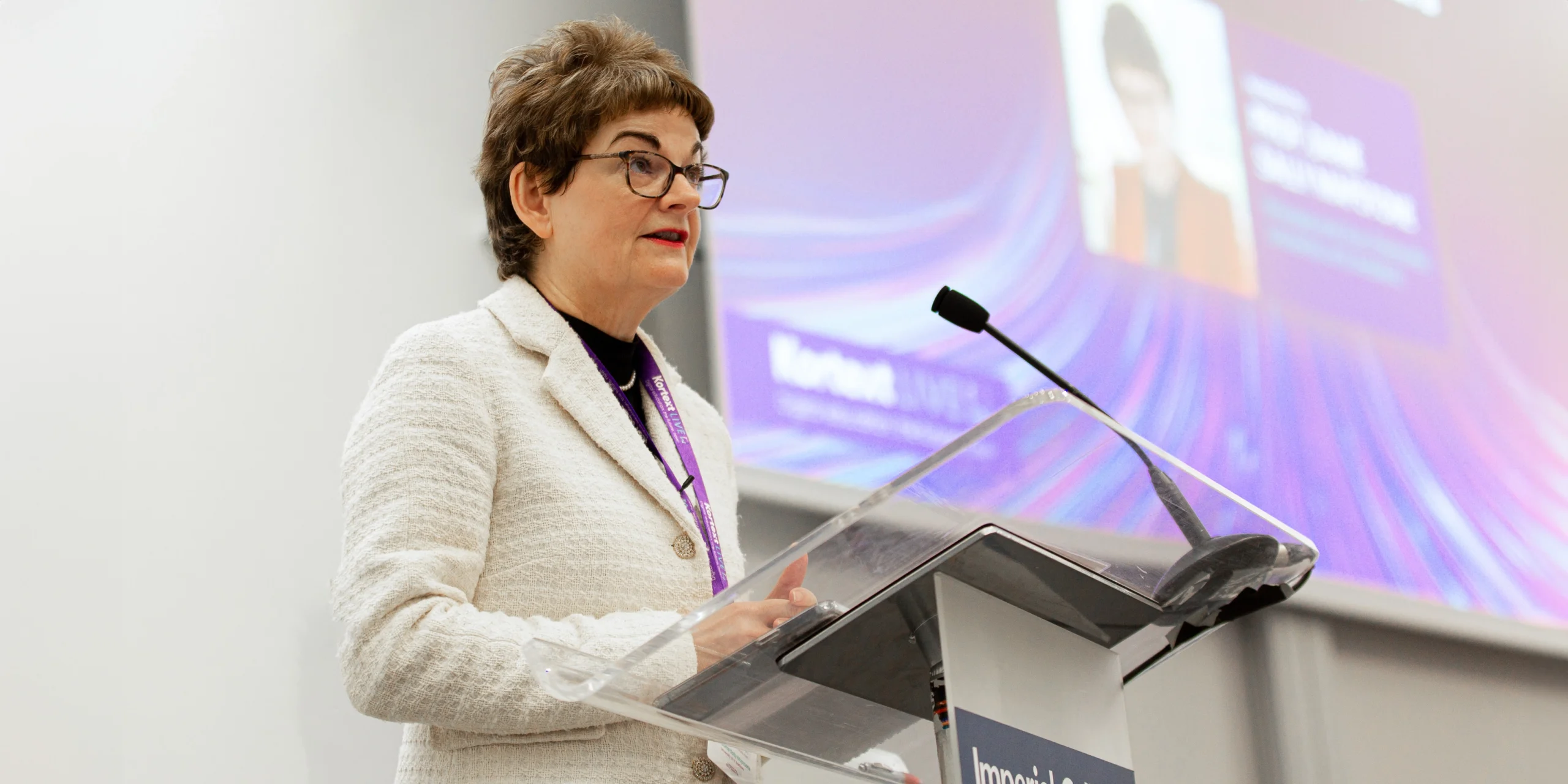Embrace Digital: Be Bold, Ambitious, Flexible and Adaptive!
At our recent event, Kortext Live, we were honoured to have Professor Dame Sally Mapstone, Principal and Vice-Chancellor of the University of St Andrews and President Elect of Universities UK, speaking about her vision for higher education in the next decade. Prior to this, we talked to Dame Sally about the opportunities offered by digital technologies.
Dame Sally, congratulations on being elected as President of Universities UK. On the UUK website, you are quoted as saying “Universities at their most essential level exist to find and bring out the best in people…”. How do you think digital technology can support this?
We can answer this question in terms of the student experience, teaching and learning, research, and in broader terms. I think digital technology has a key role to play. We need a paradigm shift from the outdated trope that digital technology is a substitute for in-person education. Digital technology can broaden student understanding. Digital channels can bring a wider range of ways for people to connect and work with each other. This reaches beyond teaching and learning to the research community too. It can enable research, as – to take the example of my own area of research expertise as a medievalist – rather than having to travel to different countries, you can see manuscripts and sources digitally. However, it’s important that we don’t lose skills – we can lose the ability to look at an object and retain our observations without digital dependency. We should be combining digital skills with traditional skills. Also, we should think about our global outreach and influence. It would be difficult to do this in person, but in partnership with others we can offer online learning as a form of philanthropy to reach people who don’t have the learning capacity we can readily supply. Yet, with digital infrastructure, we have some way to go in terms of finding financially sustainable solutions for the provision of storage and high performance computing power at universities.
In the University of St Andrews Strategy 2022-2027, you state “Great universities constantly move forward. They anticipate, lead, adapt, and are society’s engines of innovation and change. Momentum is everything.” How far are UK universities along the road of ‘digital education: the future now’ in your view?
There will be a big cultural change for universities to find the best ways to deliver on transformational projects and we have to make sure the structures of universities make large scale changes possible. If we’re planning strategically to change our set up, it will need to be a phased approach. In relation to education, we want to make progress towards a more personalised education agenda in digital terms. This will involve a series of collective shifts. It is tied into the lifelong learning agenda – we must construct the necessary support for lifelong learners who might be moving across a range of institutions as they construct their own lifelong learning journey. People in the future will be building up a portfolio of qualifications and institutions must take this into account in their strategic preparations. How we curate and present that, how we enable the experience of individuals digitally, are going to be really important if we are to deliver true lifelong learning.
With UCAS forecasting up to a million student applications in a year by 2030, how can universities use digital platforms to enable excellent student outcomes, whilst also navigating the potential challenges inherent in larger student cohorts?
There’s a huge backdrop of issues here – resources, funding and student number controls. A very important consideration is that Google and Microsoft will use digital to improve their offerings to learners, so we need to appreciate that we will be in competition with others who are not in the higher education sector. We should see this as an opportunity, not a threat. It’s an opportunity to personalise education, to give students what they want, such as watching lectures when they want to do so. It’s an opportunity to utilise a university for 52 weeks a year. It’s an opportunity for learners who are interested in completing a degree in a shorter time period. We must consider the kinds of learners who will be participating in what we have to offer. There will be an increase in the variety of prior learning experiences. Flexible digital platforms offer a powerful opportunity to bridge problems and provide a positive student learning experience.
You are known for your lifelong commitment to diversity and inclusion, and these principles have informed the University of St Andrews’ strategic planning. Do you have any thoughts on how universities can use data to support student outcomes and wellbeing?
I think that data is critical to enabling equality, diversity and inclusion. Data allows a university to understand how students are doing and to identify issues at an early stage. We can do this in an aggregated way – we use KPIs to identify the progress of students in socially disadvantaged groups – and in an individual way. You need quantitative data for understanding outcomes, participation and retention rates, but it’s also important to get qualitative data like student perceptions. You get better qualitative data when people feel they can talk to their institution. Data only gets you so far, but it gives you the groundwork to act in your institution.
Finally, at the HEPI inaugural conference in 2021, you spoke about the importance of a strategic plan as “a powerful expression of an institution’s values, an indispensable tool for decision-making, and a forceful statement of purpose…”. If you could encourage universities to put one strategy in place now, what would that strategy be?
We moved digital from being an enabling strategy to a key part of our strategic plan at the University of St Andrews. It’s very important to embrace digital, to do so boldly, to be ambitious, to be flexible and to be willing to change. However, you must be true to your institutional identity – your digital identity should be contiguous. You need to inhabit your own digital identity that speaks to who you are and what you are as an institution.






